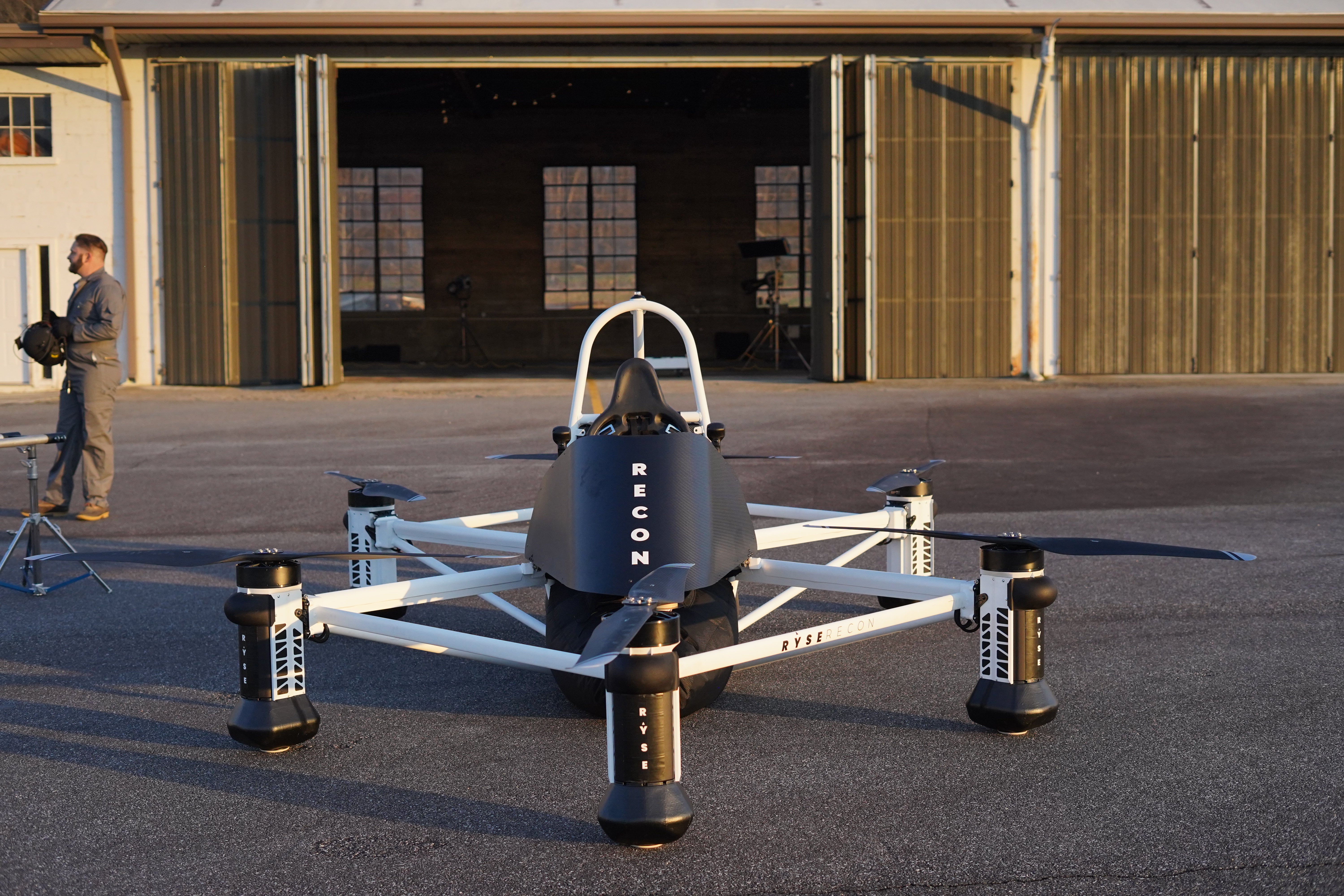Click Here to View This Page on Production Frontend
Click Here to Export Node Content
Click Here to View Printer-Friendly Version (Raw Backend)
Note: front-end display has links to styled print versions.
Content Node ID: 419612
While eVTOL aircraft developers are promising urban upwardly mobile folks an escape from gridlocked city roads, Ryse Aero Technologies is more concerned with how it can help the agricultural community. The U.S. start-up is working on a single-seat eVTOL vehicle that could be operated by farmers, winemakers, or park rangers with minimal training under the FAA’s Part 103 rules covering ultralight recreational aircraft that do not require type certification.
Ryse, which was founded just last year, is preparing to make a first piloted flight with its Recon aircraft, building on uncrewed sorties conducted so far. The company’s objective is to have the vehicle—which features six independent lift-and-cruise propulsion systems—in production as early as the first quarter of 2023.
Ryse plans to start operational trials around the end of September with five production aircraft that will be evaluated by several prospective customers, including farmers and ranchers in Colorado, California, Oregon, Michigan, Virginia, and Kentucky. The all-electric aircraft, which is expected to have a range of 25 miles and a Part 103-compliant top speed of 63 mph, could be used for tasks such as inspecting crops and rounding up livestock.
According to Ryse president and CEO Mick Kowitz, complete newcomers to flight will be able to learn how to operate the vehicle with minimal training. A tablet PC in the cockpit connected to the flight controls will provide a simple operator interface and also be used as a training platform, giving users instruction based on previous flights.
“This flies like a John Deere with just one stick,” Kowitz told FutureFlight, referring to agricultural and all-terrain vehicles commonly used by his intended customer base. He feels the adoption of self-piloted light eVTOL aircraft that could operate from land or water could prove more popular with farmers than drones, which he claimed are limited in performance and somewhat counterintuitive to operate.
Ryse says the Recon will allow agricultural customers to cover a lot more ground, a lot quicker and with fewer carbon emissions, as well as reduce soil compaction caused by ground vehicles. Kowitz gave the example of a Colorado rancher in Steamboat Springs with 20,000 acres of land, ranging in elevation from 8,800 to 10,000 feet. He routinely has to make an uncomfortable and potentially hazardous 90-minute round trip to open a reservoir. Ryse’s goal is to help him complete this task in a fraction of the time by air and he will also use it for rounding up cattle, sheep, and goats.
Another one of the partners set to take part in flight trials in September is a large agricultural supplier that sells products including turf, fertilizers, flowers, fruits, and vegetables. It will receive two of the Recon vehicles for use on farms in California, Oregon, and Kentucky.
According to Ryse, it will take operators around 90 minutes to fully recharge the Recon’s battery packs, which are installed outside the pressurized airframe. It says that charging stations will be able to run off standard AC electrical supply or tap solar or wind energy.
The company’s target price for the Recon is $150,000. It is currently fundraising to support plans to launch production. It is looking at a distribution and customer support model that could be similar to those now used for agricultural vehicles and motorcycles.
Importantly, under Part 103 rules, the ultralight aircraft, which must have a payload of no more than 255 pounds and fly only in uncontrolled airspace, cannot be operated commercially by a company providing flights as a service. They have to be personally operated by their owners and end-users—i.e., by the farmers, winemakers, and ranchers themselves.
As an ultralight aircraft, the Recon can be flown only in daylight conditions. It cannot be operated in bad weather or instrument meteorological conditions.
Ryse says that Recon’s modular design means that in the future it could rework the basic technology in another airframe configuration, such as one including a fixed-wing and perhaps covered cockpits. Its tubular frame is pressurized so that the flight computer can identify whether any cracks or structural degradation have occurred, as might happen following a hard landing.
Kowitz is a specialist in artificial intelligence communications with 30 years of experience in software development and innovation in technologies such as speech recognition and natural-language processing. Ryse’s director of regulatory affairs and aerodynamics is Erik Stephansen, who is an experienced aerobatic pilot and was previously involved in developing another eVTOL demonstration aircraft using advanced robotic wing controls.
